You are getting to get this impression very quickly anyway so I’m going to lay it out for you: I love using a menstrual cup when I travel!
Up until very recently, dealing with my period on the road has always been an enormous cause for stress and anxiety. It appears that this isn’t uncommon either. Most female travellers that I have spoken to have said that they feel some concern about having a period when they travel. Not only can period aids be expensive and difficult to come by in certain locations but they can also be a sizeable burden when all you’re carrying is a backpack.
For a long time, I had always chosen to avoid having a period abroad by altering my contraception pill schedule. I guess that goes a fair way to illustrate just how much I hate having periods!
As a woman already nearing thirty, I had begun to wonder whether I would ever find anything to make my monthlies a normal part of life and not a week to be skipped whenever possible. This was until I discovered the menstrual cup! (Cue singing angels and bright white lights.)

Travelling with a Menstrual Cup: What You Need to Know!
What is a Menstrual Cup?
A menstrual cup is a small cup (usually made of silicone) that is inserted into the vagina to collect menstrual blood. Once full or after the recommended time frame, the contents can be emptied and disposed of. The menstrual cup is shaped like a small wine glass, with a short stem to aid insertion and removal.
Most menstrual cups have small air holes. These are to allow air into the cup so it can open fully. They are also used to create the vacuum needed for the cup to work. When removing the cup, the air holes help users to break the vacuum seal, making it easier to remove the cup without discomfort.
Why Did I Start Using a Menstrual Cup?
A combination of factors contributed to my decision to try a menstrual cup. Having not yet discovered a period aid that I was happy with and knowing I had too many monthlies yet to come, I decided to start looking for another alternative.
As someone who travels a lot, I also wanted to find something that would fit with my lifestyle. As an initially reluctant but increasingly outdoorsy person, I needed something that would be comfortable and withstand both extreme sports (but not too extreme – you know me) and long-distance hikes.
Also, with sustainable travel becoming more prominent than ever globally, I was keen to see whether I could bring my period in line with these values. After doing some research and hearing positive things about the menstrual cup for travel and also environmentally, I figured I had nothing to lose by giving it a try.
Why Use a Menstrual Cup for Travel?
- Reusable
Most menstrual cups are made of silicone which is durable and easy to clean. After you have done a deep clean of your menstrual cup once your cycle ends, simply store it and use it again next month!
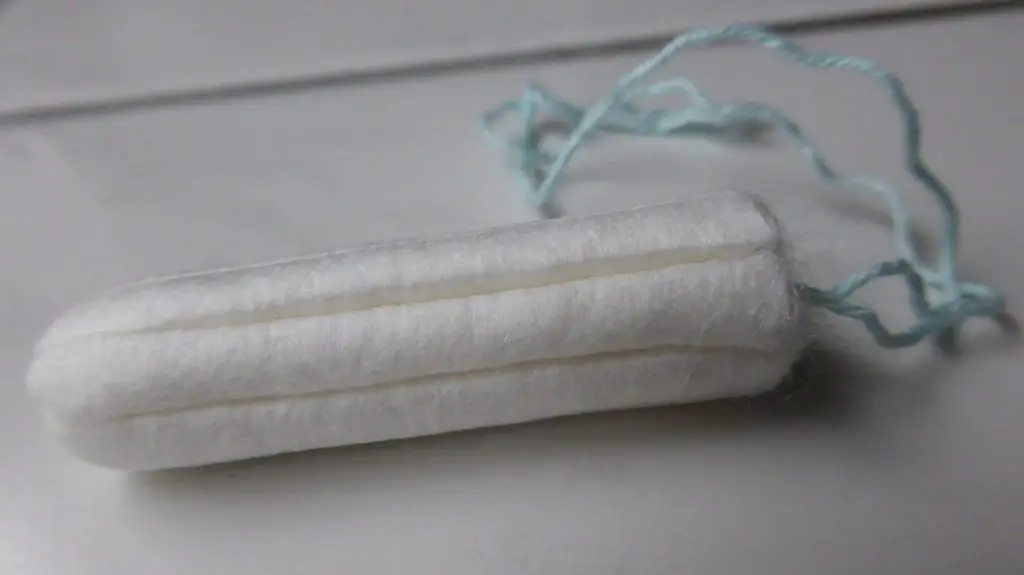
- Economic Investment
Menstrual cups cost anything in the region of £15-£25 ($20-$33). Whilst this initially appears to be a costly spend for your period, it could potentially be your only menstrual based expenditure for the next five years. The charity Bloody Good Period estimates that the average lifetime cost of having periods is about £4,800 ($6,250). Anything you can do to reduce that is definitely a good thing!
- Lightweight
If you are someone who travels with carry-on only, you will appreciate the importance of keeping your rucksack light. As the menstrual cup is small and made from silicone, it is not only lightweight but takes up far less room in your bag than alternative sanitary items.
- No Leaks!
Before discovering the menstrual cup, I formerly had no success in finding a period product which didn’t leak. With a menstrual cup though, this is no longer an issue. The shape and texture of the cup mean that it fits to your vagina walls which prevents unpleasant leaks, even while you sleep. I was so convinced that I have actually slept in dorm rooms while using it. If that isn’t a show of faith then I don’t know what is!
- Environmentally Friendly
Prolonged use of a menstrual cup over tampons and pads means that less sanitary items are ending up in landfill and fewer trees are being harvested for paper-based products. It may also surprise you to learn that tampons and pads actually contain a lot of plastic too, no good if you are trying to reduce your plastic footprint!
- No Bad Smells!
One of the things I hated most about using disposable products for my period was the horrendous odour, only made worse by travelling in hot climates. This embarrassing problem is eradicated with the use of a menstrual cup as it collects the fluid instead of absorbing it which is what causes that grim smell. (Sorry for the TMI, ladies will know.)
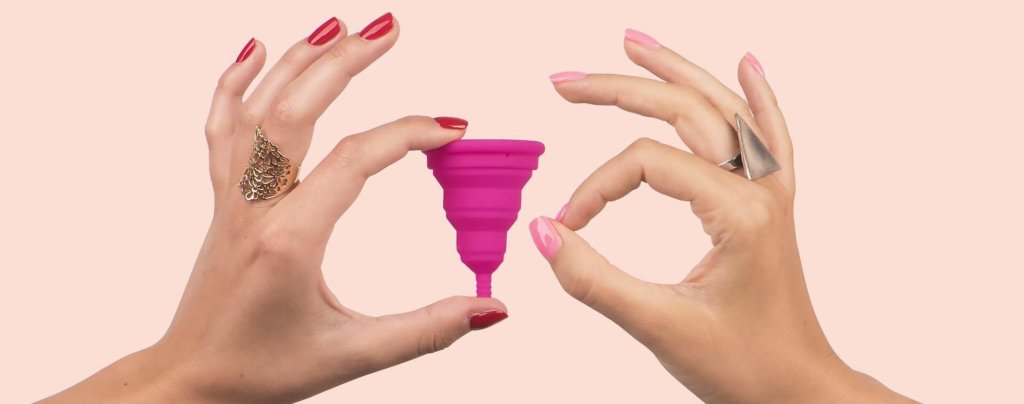
- Keep it in for 12 Hours!
Depending on your flow and the cup you use, you can leave it inserted for up to 12 hours. This means living with less worry. Not only is this great for the on-the-go nature of travel but it also calms anxious minds!
The Cons of Menstrual Cups for Travel
- Too Much Choice
Buying a menstrual cup can initially be confusing. You need to consider the size, material and texture of the cup as well as the shape and depth of your own vagina. Don’t worry though, I’ve included the best cups for beginners guide further down this post to help you out!
- Blood
Inserting and removing a cup from your vagina means that you will need to be well acquainted with your body. When you first start using a cup, the mess can be daunting but as you master your technique, the whole process quickly becomes much more refined.
- Practice Needed
Both inserting and removing a menstrual cup is an art that can take a little practice. Different folding techniques work for different people and it can take some time to work out what works best for you.
- Embarrassing
When you travel, you might be staying in a hostel with a communal bathroom. When you then consider you have to find an area to clean your menstrual cup, the whole process can seem a bit intimidating.
- Don’t Drop It!
It is easy to drop a menstrual cup when removing it and in most cubicles, there is no place for it to go other than in the toilet! Watch out for automatic flush toilets as they could whip your cup away from you forever!
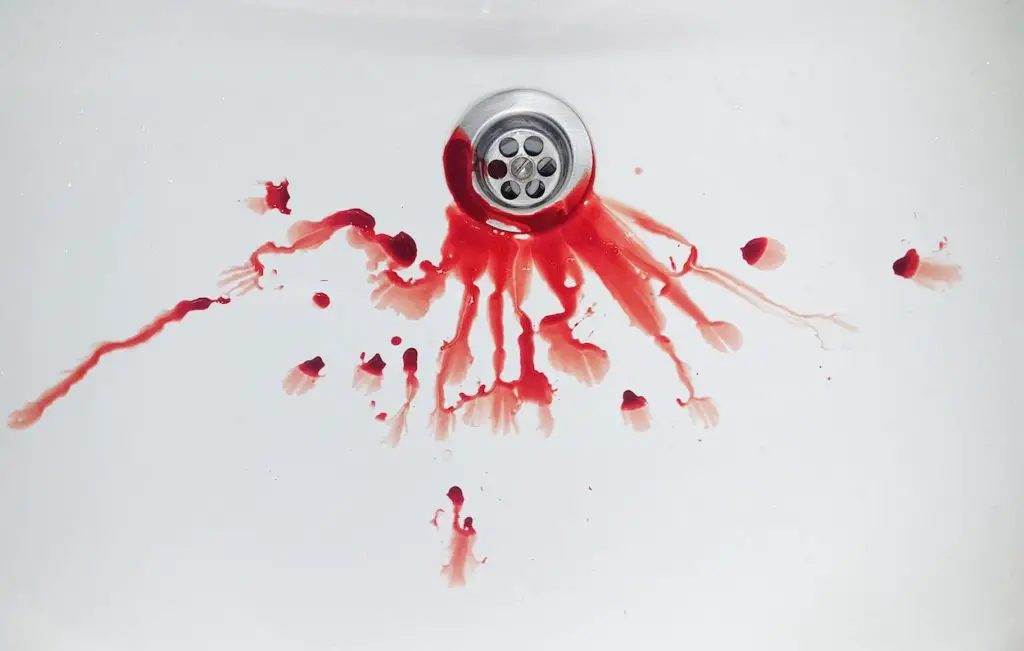
How to Insert a Menstrual Cup
Whilst the idea of inserting a menstrual cup can be a little daunting, it really isn’t as bad as you would expect. Just check out the video below from Put a Cup In It for guidance and suggested folding techniques!
How to Clean a Menstrual Cup
You should always try to wash your menstrual cup with clean, safe drinking water. This is to avoid getting sick from dirty water. Obviously, when it comes to travel, clean drinking water isn’t always available so if in doubt, use bottled/boiled water.
Once you have emptied your menstrual cup, you will need to clean it. Use warm soapy water (always use a mild, fragrance-free soap) and clean it until you have removed all of the blood. Sometimes, gunk might get in the holes of the menstrual cup. The best way to remove this is to slightly stretch the plastic and run hot water through the holes. This should dislodge any residue.
If you are not in a place where you can give your menstrual cup a proper clean, simply empty it, rinse (if possible) and wipe off any gunk with toilet paper. It is ready to be used again but you will need to give your cup a proper clean when you next remove it.
At the end of your period, you will need to sanitise the cup. The best way to do this is by boiling it. Always make sure that you have enough water in the pan so that you don’t accidentally melt your cup!
Although boiling is recommended in between cycles, there is reason to believe that boiling your cup too frequently will cause the silicone to thin. This can mean that the cup might not last its full lifespan.
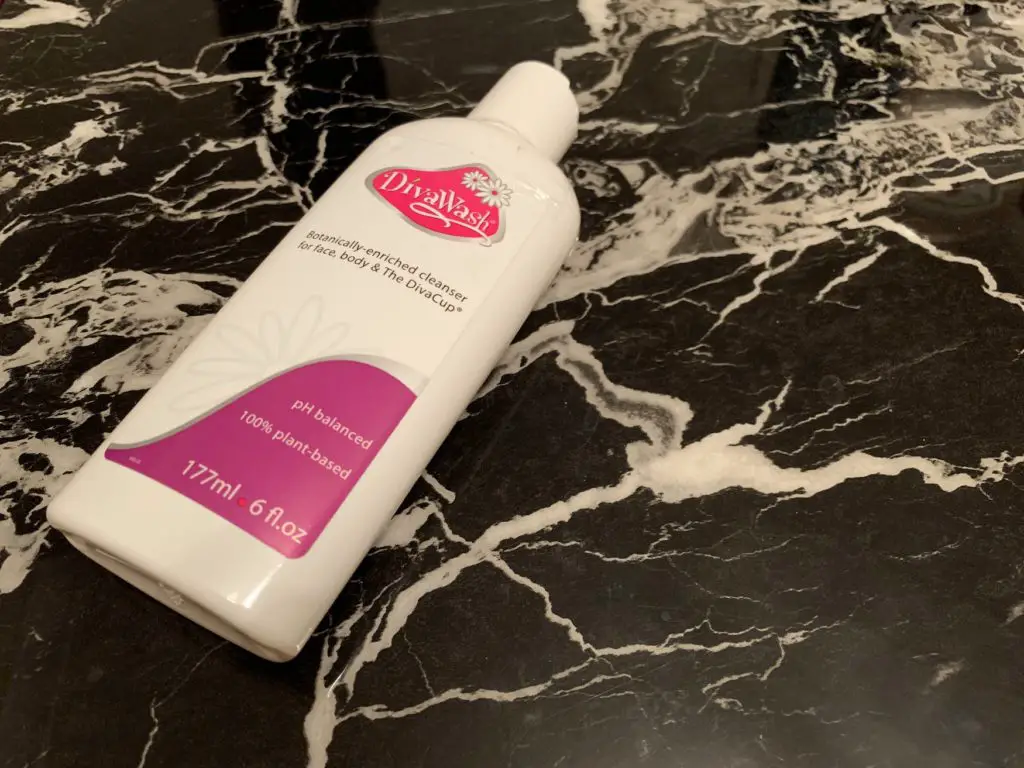
Tips for Travelling with a Menstrual Cup
- Practice inserting and removing your cup before you travel. It isn’t hard to insert a menstrual cup in a confined space, provided you have already worked our your preferred techniques and folding method!
- If you find the cup uncomfortable, you can trim the stem.
- Always make sure you have clean hands when inserting and removing the menstrual cup. If you don’t have access to drinking water and soap, using antibacterial gel on your hands will do the same job. However, you should not use antibacterial gel on your cup. These chemicals are too harsh for the vagina and will also degrade the cup material over time.
- Pack a fragrance-free soap to clean the cup. Although many of the manufacturers sell their own cleaning lotions, any fragrance and oil-free soap will work fine.
- Store your menstrual cup in a travel pouch. My DivaCup came with a pouch but they are easy to purchase separately too. Using one of these is a good way to keep the cup clean when it is packed ready for your next adventure!
- Purchase some cup wipes if you think you may not have access to a mild soap when you travel.
- Take bottled water into the cubicle and after emptying, do a quick rinse of the cup. You can use tissue paper to wipe off any excess or clots before taking it to the sink for a proper clean.
- When cleaning the cup in a public sink, make sure to remove most of the blood using the above method. You can then proceed to wash both your hands and the cup at the same time. By acting naturally, you won’t draw unwanted attention.
- Clean your cup at quieter times of the day if you are sharing a bathroom.
- End the period shame! If you’re feeling ballsy, just clean your cup as you would usually, even with other people around. After all, all of us women have periods and they are really nothing to be ashamed of. You may even introduce someone else to the wonder of the menstrual cup!
Best Menstrual Cups for Beginners
As much as I would love to recommend just one brand, this is near on impossible as everyone’s vaginas are different. When purchasing a menstrual cup, always make sure you buy the correct size (usually based on your age and whether or not you have had children) and read the reviews.
The following brands offer highly rated menstrual cups for beginners and also represent a good range of what is available on the market. I have listed them below with a few of the commonly reported pros and cons.
DivaCup
My cup of choice and the one I can personally recommend!
| Pros | Cons |
| + Soft silicone material | – Longer stem which may not be suitable for everyone |
| + Handy travel pouch | – Clear silicone can become discoloured |
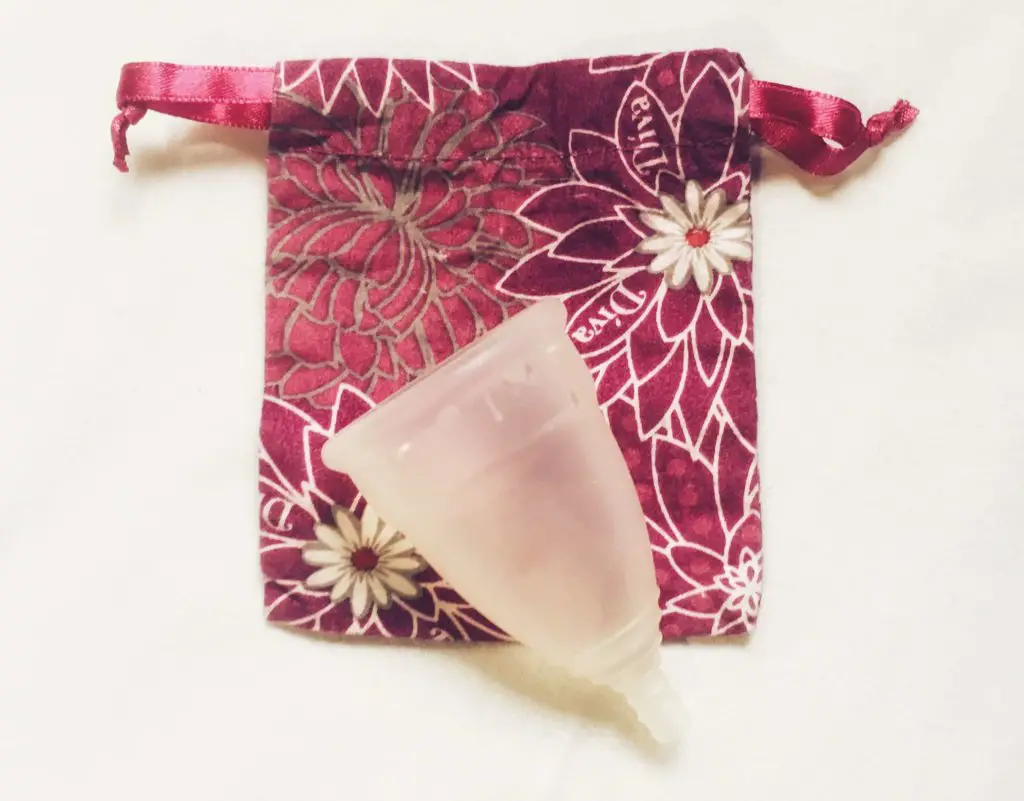
Mooncup
| Cons | |
| + Flexible and soft material | – Potential difficulty with removal |
| + Great for beginners to use | – Clear silicone can become discoloured |
| + Top grade medical silicone |
Lunette Cup
| Pros | Cons |
| + Different colours available | – More expensive than other options |
| + Holes in cup are larger (easier to keep clean) | |
| + Very pliant |
Lunacup
| Pros | Cons |
| + Ball stem makes it easy to remove | – Ball stem can protrude for women with a shorter cervix |
| + Elongated design |
Menstrual Cup FAQ’s
When Does it Need Replacing?
The average menstrual cup tends to last for around five years before it needs replacing (but this will depend on your flow and how well you take care of it). Don’t be worried about discolouration of your cup over time, it will still work fine.
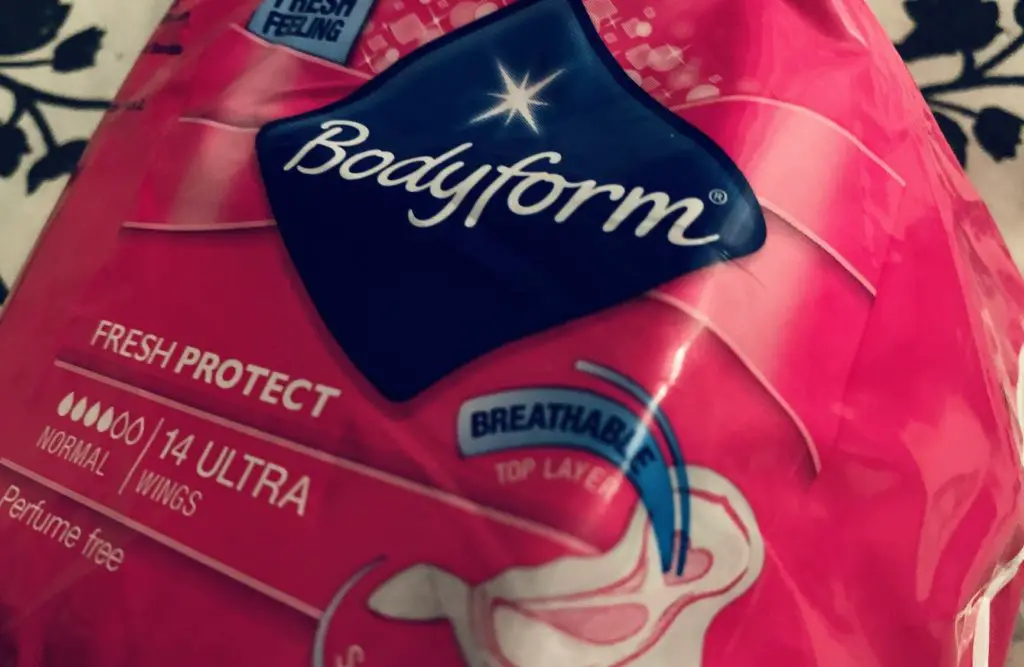
Do I Need to Wear a Pad Too?
Wearing a pad whilst you are getting used to a menstrual cup is not a bad idea as it will take you some time to perfect getting it and out. If you have inserted the cup but not done it properly, there is a possibility it could leak. Using a pad helps prevent any embarrassing incidents.
For most though, this will not be a long term thing. Despite wearing pads when I was learning my way around my new menstrual cup, I no longer need them.
Can a Menstrual Cup Get Stuck?
Of course, as a nervous individual, this was a thought that crossed my mind in the start. However, you’ll be pleased to know that this is near impossible. There is literally nowhere for a menstrual cup to go (it certainly won’t be fitting through your cervix)!
If your cup has moved higher than usual and you can’t feel the stem, don’t panic. Instead, just bear down with your pelvic floor muscles and you can push it back into reaching distance.
Can I Wear a Menstrual Cup Swimming?
You can indeed! The menstrual cup is great for all things travel and extreme sports and swimming are no different!
Travelling Whilst Using a Menstrual Cup: My Verdict
Since starting to live and travel with a menstrual cup, I haven’t gone back. The cup not only makes my periods more comfortable but also makes them a hell of a lot easier to manage on the road.
Menstrual cups are environmentally friendly which means I contribute less to landfill and because they are reusable, I also get to save valuable backpack space that I can instead use for other important goodies.
Whilst the menstrual cup isn’t for everyone, it was everything I had been looking for. Convenient, comfortable and more sustainable, I think it is a must-have for every female traveller!
Do you travel with a menstrual cup yet?

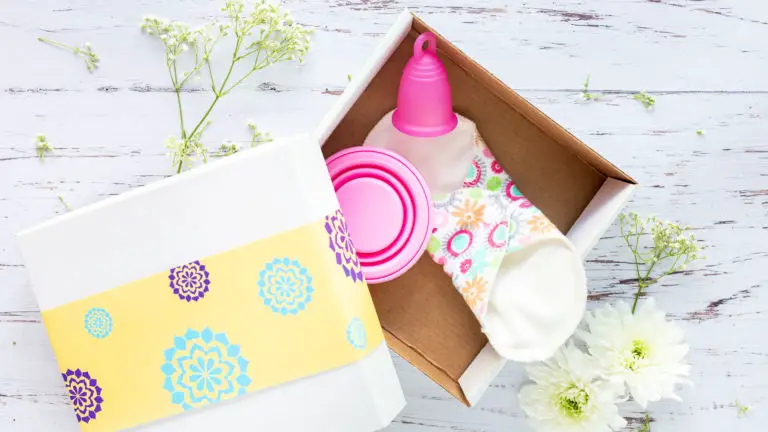

Really awesome article. Thanks for sharing that type of good content.
Honestly, it’s been such a game changer for me, I’ve been telling everyone!
I’ve been so tempted to try one of these but just haven’t made the leap. It does seem like there are so many pros, though, especially while traveling!
You should definitely give it a go, I was a bit wary at first but now I’m completely converted! It really does make periods so much easier when you’re travelling as well.
I think it’s so cool you wrote this post! Cutting down our impact is so important. This post was easy to read and hopefully will help nudge a lot of other people to using this method. Thanks! 🙂
I couldn’t agree more. I know that it is a tiny step when you consider our impact on the environment but every little helps! I understand that the idea of using a menstrual cup can be a bit daunting but I’ve found it to be a total game-changer. I’d love it if more people would give it a try! 🙂
Many females still have no confidence to use this menstrual cup thing. But it’s worth a shot.
Yeah I agree. It will definitely take a while for many women to pluck up the courage to give it a go. It certainly sounds daunting to start with! Saying that though, the market is changing so much at the moment that I think it is only a matter of time before choices like this move into the mainstream.
My first one was Lunette and it was awesome. My second one is Lily cup compact and that is what I recommend for traveling. It is collapsible and has its own small box, it becomes very small and light to travel with:)
That’s great! Using a cup has definitely made travel so much easier – I can’t believe I ever used to use pads and tampons!